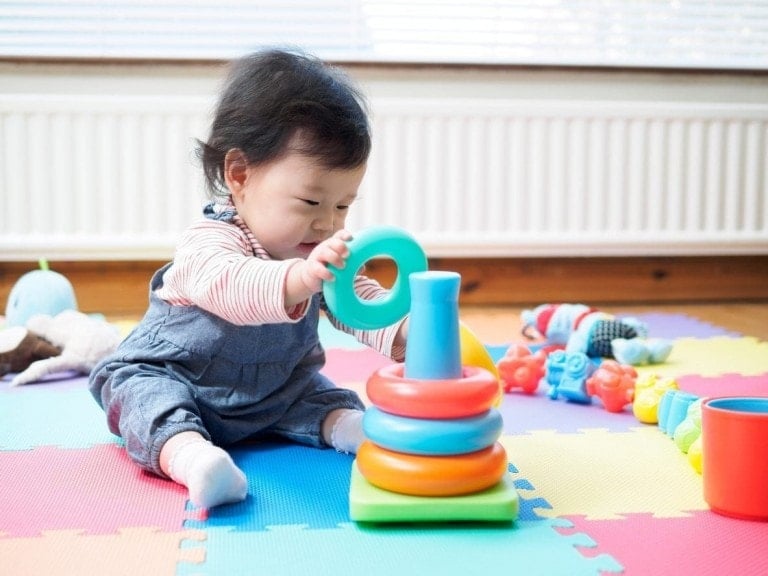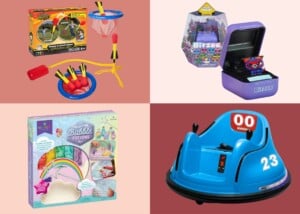When you think of the word “allowance,” what comes to mind? Many of us had an allowance when we were younger for keeping our rooms cleaned and helping out, but nowadays, it’s hard to know what chores your child should do and how much you should pay them. Should you give them a flat amount — $5, $10, or more? Should you give them a list with each item given a dollar value? And why should kids even get an allowance?
An allowance is a great way to teach your children about handling money. Let’s face it; when a child sees a toy at the store, they have to have it, or in their words, “I need it.” But the reality is they don’t need it — they want it. By giving them an allowance, you can teach your child the importance of saving for something they want versus asking for everything they see.
Teaching Money Management
One of the reasons why kids should get an allowance is to teach your child how to manage money. After giving them an allowance, have your child set aside a portion for saving and giving. For example, you can have them set aside 10% to their savings and 10% to give. This allows your child to learn the importance of both saving and giving money.1 It also teaches them impulse control because they know not to spend all of their weekly allowance immediately.
In addition, teaching money management gives your child the freedom to make their own decisions. For example, if they want a new toy, they will have to save for it. You can even help them create a chart to see their progress while saving, and it will teach them self-control.1
What Age To Start an Allowance
It’s up to you to choose the age at which your child gets an allowance. However, a good age to consider is 5 or 6 (or kindergarten age). The reason why kids should get an allowance at this age is that they can start learning how to earn and manage money around this time.2 An important lesson before starting an allowance is teaching the basics of money — how many quarters are in a dollar? How many dimes are in a dollar? And so on.
How Much Money To Give Your Child
A baseline to determine the amount you give is your child’s age. When starting at 5 or 6 years old, there isn’t a need for much money — maybe $5 a week or less is a good starting point. But when your child gets older and starts having more activities with friends (like going to the movies, bowling, etc.), perhaps their allowance should be more — maybe around $15.
So, what are your options when it comes to giving an allowance? Here are a few ways to handle the situation:
1. No Free Ride Method
The first option is to have a list of foundational jobs. These chores are not assigned a dollar value, and your child is not paid for doing them. They simply do these jobs because they are part of the family. They must learn how to contribute to keeping the house up without any financial reward. These foundational jobs can be your baseline. Once they do these jobs, your child can do other ones above and beyond to earn an allowance.
Some great foundational jobs include:
- Making their bed every day
- Rinsing and putting their dishes in the sink
- Helping fold the laundry
- Setting the table for dinner
- Picking up their toys after playing
This system is great for teaching your child the importance of helping out around the house before having a chance to earn money. In addition, this system can help your child feel empowered because it’s a great feeling to know you helped mom and dad out all week (without being monetarily rewarded for it).
2. Earn It All Method
Another option to determine an allowance is to set a dollar value for every job. Your child can do as much or as little as they want to earn money. There are no baseline chores, so everything has a dollar amount, and every job is a possibility to earn money.
For instance, say you give your child $0.10 for making their bed every day, and at the end of the week, they missed two days. Now, your child has earned only $0.50 that week for that chore. This method is a great way to teach them the value of each job and how skipping one or two days could hurt the total amount they receive.
3. No Chores Method
Many parents feel you shouldn’t have your child do any chores and should just give an allowance. If that’s the case, that’s fine! However, if you still want to give them an allowance, you just have to decide how much to give. This method is a great way to teach your child the value of hard work. They are expected to contribute and do tasks around the house without being rewarded. It also shows them how to save for something they want because they will earn the same amount each week.
If your child wants to earn a little more money or buy something extra, you could allow them to ask for harder, more complicated jobs and negotiate a price. This will teach them to think outside the box and not be afraid to ask for more work to reach their goals.
4. No Money Method
The final option is not to give any allowance. You might feel that your children should not be rewarded or paid for helping since they are part of the family. If your child wants or needs something, they ask you for it. You weigh the pros and cons, then make your decision. This goes back to the idea of everyone in the family being expected to pitch in. In addition, this system teaches the value of hard work and being part of a team.
We hope this article gave you a better sense of why kids should get an allowance and how to organize your allowance system. Whatever you decide will be great! You really cannot go wrong. And if you find that the system doesn’t work for your family, change it!











